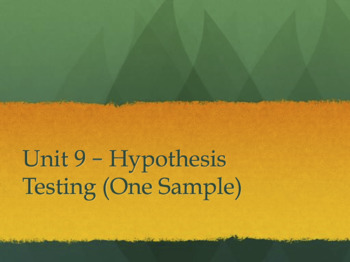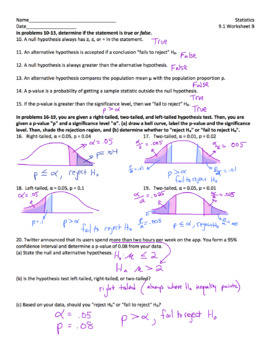Statistics Unit 9 Bundle - Hypothesis Testing (one sample) (18 days)
- Zip
- Excel Spreadsheets
Description
This is a unit plan bundle for a Statistics class. The plans include common core math standards, time frame, activities, enduring understandings, essential questions, and resources used. It is designed to last 18 days, depending on pacing. The plans include:
56-slide presentation, with annotated guide for reference
5 Worksheets
1 "Read & Respond" Article Worksheet
2 Quizzes
"Do Now" Entrance problems
Spreadsheet Activity - Hypothesis Testing
Review slides (for peer presentations)
Unit Review
Unit Test
Pacing Guide with administrative unit plan
All with answer keys included
*The topics covered are Hypothesis Testing (μ - σ known and unknown, population proportion p, and variance σ² with Chi-Square statistic χ²), T-distribution, Chi-Square distribution, Null & Alternative Hypotheses, Decision Criterion, P-value ρ & significance level α, quality checking, election results, using graphing calculators, and Spreadsheets. Examples use real-world data such as salaries of professional athletes. The documents are Word based, Powerpoint based, Excel Based, pdfs included, and completely editable. Enjoy!
**If you find this product useful, consider buying "A Mountain of Statistics Curriculum" for the entire class**
***Please read the "readme" text file and End User License Agreement contained in the Product. Thank you for respecting my work***





